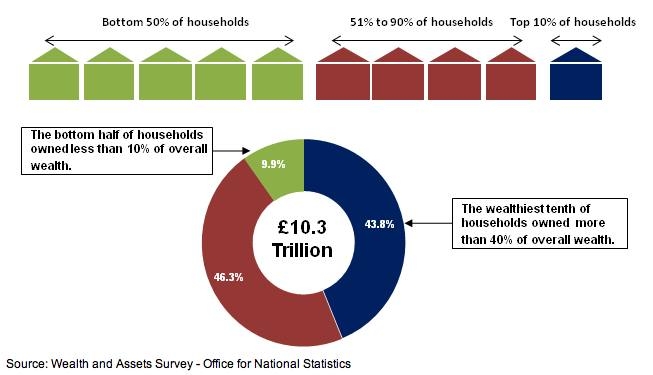
The richest 10 per cent of households in the UK are worth £4.5tn, according to the Office for National Statistics.
The wealthiest area was the South East of England with more than one in seven households in the South East being in the top 10 per cent of households in the UK in terms of wealth.
The wealthiest 10 per cent are those households with assets of at least £967,000. The top one per cent of households had wealth of at least £2,807,000. To be in the bottom 10 per cent, households needed a total wealth less than £13,000.
The total wealth of all households in the UK was £10.3 trillion.
The ONS said: "The wealth held by the richest 10 per cent of households combined was £4.5tn and represented a 43.8 per cent share of aggregate total wealth. In contrast, the combined wealth of the bottom half of households in the distribution was £1.0 trillion; a value which accounted for 9.9 per cent of aggregate total wealth.
{desktop}{/desktop}{mobile}{/mobile}
"The wealth held by the top 10 per cent of households was therefore over four times greater than the wealth of the bottom half of all households combined and over 850 times greater than that of the least wealthy 10 per cent of households."
Over half of total wealth in the top 10 per cent was comprised of private pension wealth while 26 per cent was property wealth, 13 per cent was financial wealth and five per cent was physical wealth (household possessions and valuables).
The ONS found the heads of these wealthy households were aged between 55-64, likely to have a degree and work in managerial or professional occupations.
In the lowest ten per cent, 30 per cent was private pension wealth, 37 per cent was property wealth, four per cent was financial wealth and 30 per cent was physical wealth.
Scotland had the lowest percentage of wealthy households with one in 14 coming from the top 10 per cent.
• Want to receive a free weekly summary of the best news stories from our website? Just go to home page and submit your name and email address. If you are already logged in you will need to log out to see the e-newsletter sign up. You can then log in again.

